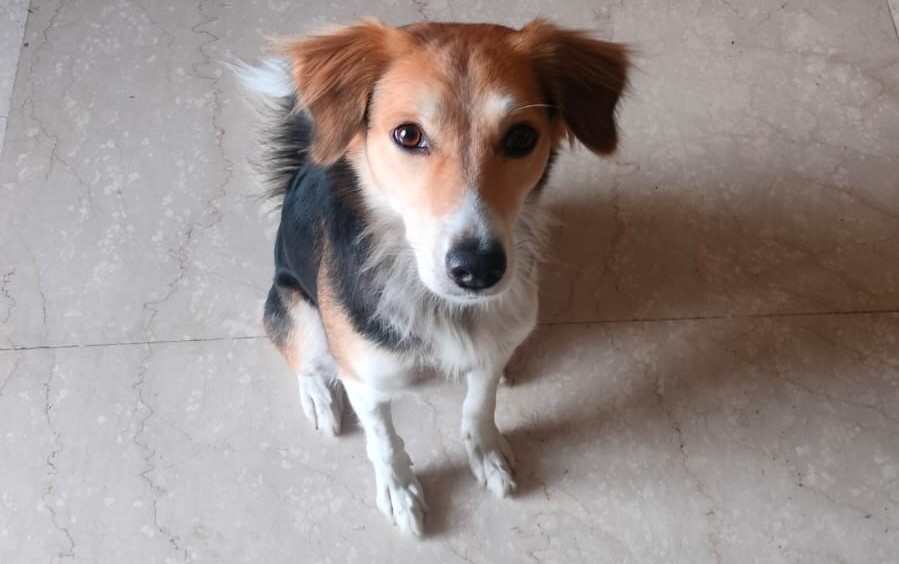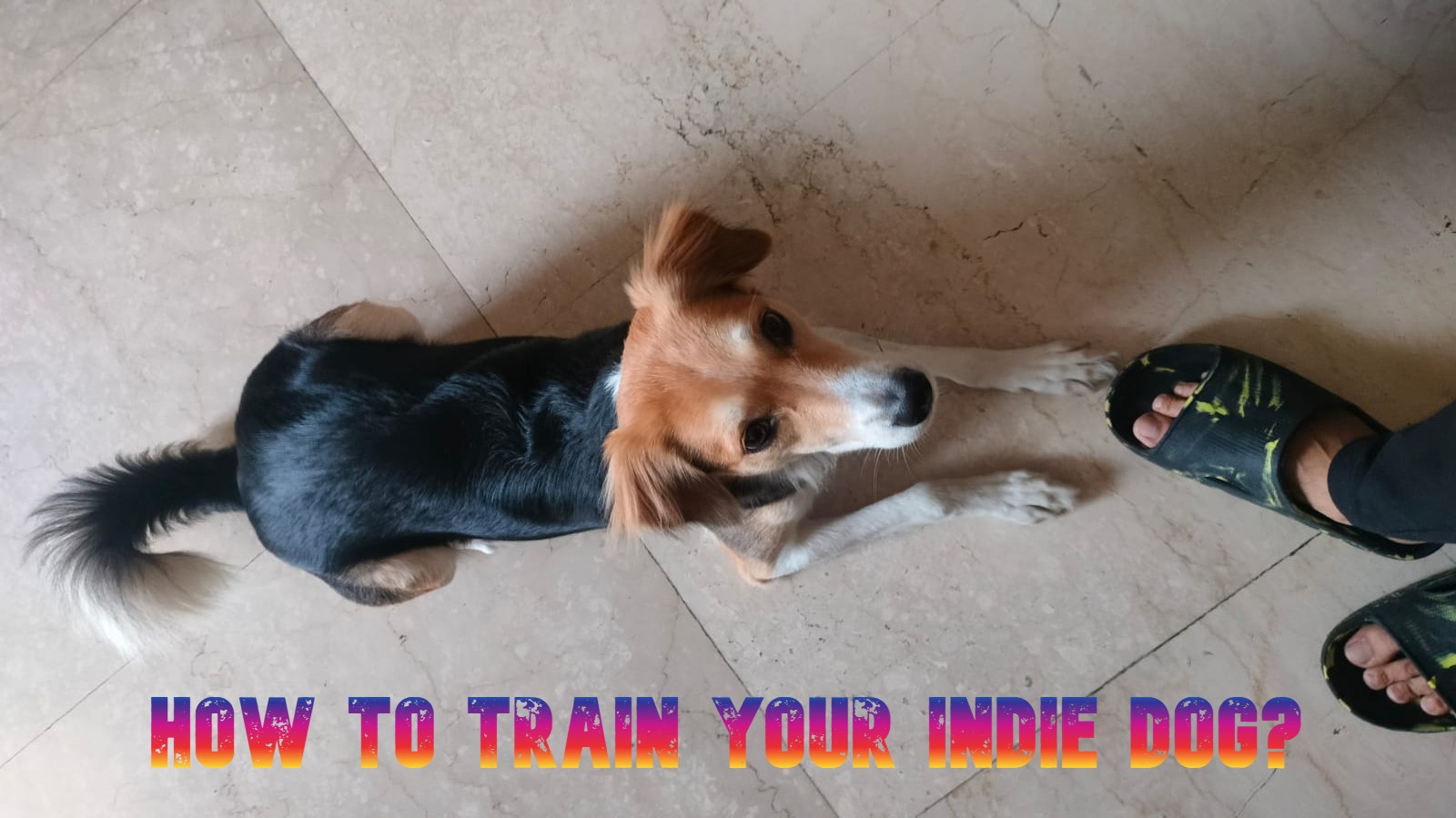Dog training is an essential aspect of responsible pet ownership, contributing to a harmonious relationship between you and your furry friend. While there are various dog breeds, indie dogs, known for their independent nature, require specialized training techniques. In this guide, we’ll explore the intricacies of training indie dogs and provide valuable insights for a successful training journey.
Characteristics of Indie Dogs

Indie dogs, short for Indian pariah dogs, boast unique traits such as intelligence, independence, and loyalty. Understanding these characteristics is crucial for effective training. You need to win their trust as they come from a place where they starve for days and go through rough behavior. They are very intelligent and grasp activity you teach them very quickly.
How to Train Your Indie Dog?

Given the inherent intelligence of this breed, they possess a remarkable ability to quickly adapt to various commands and behaviors.
- Always start with the basic training commands such as stay, sit, and down.
- Best training methods involve the use of treats, as this breed thrives on positive reinforcement and enjoys being acknowledged for its good behavior.
- Use “NO” command if they are doing something wrong and it might get daunting when they dont listen to your “no” command but consistency is the key here guys.
- Never give them anything to eat from your own plate.
- When you take them for walk give “sit” command and untill they sit do not tie their leash.
- When some guests come in your house do not tie them or close them in the room. Make sure they are able to see you or sitting near you and try that they meet the guest so that they don’t stay anxious.
- While taking a walk if they are pulling the leash, just stop there and keep quiet and do not move untill the leash is slack.
- If you want to train your dog to be alone in home then you need to start leaving home for short time interval and gradually increasing it.
- For Training your dog to comeback you need to either teach your dog thier name or you can use other signals like “come here” or a whistle and when they come back to you always reward them with treats and you can increase difficulty by keeping distractions or increasing the distance.
- Training your dog not to bark unnecessary is done by rewarding them when they get quiet and inviting them to play when they get quiet. Ignore them compleately while they are barking, do not shout on them or don’t use something to scare them.
Common Challenges in Training
Training indie dogs may present challenges like stubbornness or resistance to commands. Recognizing these challenges is the first step in overcoming them. Here are some common challenges and tips for addressing them:
Stubbornness and Independence:
- Challenge: Independent dogs may be less motivated to please their owners and more inclined to do their own thing.
- Tip: Use positive reinforcement techniques such as treats, praise, and rewards to make training more appealing. Consistency is key; establish clear rules and boundaries.
Socialization Issues:
- Challenge: Independent dogs may be less socialized, leading to difficulties in interacting with people, other animals, or new environments.
- Tip: Gradually expose your dog to different people, places, and situations. Use treats and positive reinforcement to associate these experiences with positive outcomes.
Leash Pulling:
- Challenge: Independent dogs may have a strong desire to explore and lead the way, making leash training challenging.
- Tip: Teach loose leash walking through positive reinforcement. Stop when there’s tension and resume walking when the leash is loose. Use treats to reward walking beside you.
Selective Listening:
- Challenge: Independent dogs may choose not to listen, especially in distracting environments.
- Tip: Practice commands in various environments, gradually increasing the level of distractions. Reward your dog for listening, and make training sessions short and engaging.
Boredom and Destructive Behavior:
- Challenge: Independent dogs left alone may become bored and engage in destructive behaviors.
- Tip: Provide mental stimulation through puzzle toys, interactive games, and varied activities. A tired dog is often a well-behaved dog.
Territorial Behavior:
- Challenge: Some independent dogs may display territorial tendencies, leading to aggression or overprotectiveness.
- Tip: Socialize your dog extensively from an early age. Use positive reinforcement to reinforce calm behavior around people and other animals.
Consistency Issues:
- Challenge: Owners may struggle with staying consistent in their training methods and rules.
- Tip: Establish clear and consistent rules from the beginning. All family members should follow the same guidelines to avoid confusion for the dog.
Lack of Focus:
- Challenge: Independent dogs may have a short attention span and struggle to maintain focus during training sessions.
- Tip: Keep training sessions short and engaging. Use high-value treats and mix up the training routine to keep your dog interested.
Common Mistakes to Avoid
Lack of Consistency
Consistency is key in dog training. Owners often make the mistake of inconsistently enforcing rules, confusing their furry friends. Establishing clear boundaries and maintaining them consistently fosters better understanding.
Neglecting Socialization
Isolating your indie dog can lead to behavioral issues. Socialization is vital during puppyhood to prevent fear and aggression later on. Exposing your dog to various environments, people, and animals helps create a well-adjusted pet.
Using Punishments Ineffectively
Negative reinforcement can be counterproductive. Instead of punishment, focus on positive reinforcement to encourage desired behavior. Dogs respond better to rewards and praise than to punishment.
Ignoring Basic Commands
Basic commands are the foundation of good behavior. Neglecting commands like sit, stay, and come can lead to chaos. Invest time in teaching these fundamental commands for better control.
Overlooking Mental Stimulation
Indie dogs, often highly intelligent, need mental stimulation. Puzzle toys, interactive games, and challenging activities keep their minds engaged, reducing boredom-induced misbehavior.
Inadequate Exercise
A tired dog is a well-behaved dog. Insufficient exercise can lead to excess energy, resulting in destructive behavior. Regular walks, playtime, and activities tailored to your dog’s energy level are crucial.
Poor Handling of Fear and Anxiety
Indie dogs may be prone to anxiety. Mishandling fear can exacerbate behavioral issues. Understand your dog’s triggers, and employ positive reinforcement to help them overcome fears gradually
Conclusion
In conclusion, training your indie dog is a rewarding journey that fosters a strong bond between you and your furry companion. By understanding their unique characteristics and employing positive reinforcement techniques, you can overcome challenges and nurture a well-behaved and happy pet. Patience, consistency, and empathy are key elements in the training process, as you guide your indie dog towards becoming a well-adjusted and socially adept member of your family. Remember that every dog is an individual, and tailoring your approach to their specific needs will result in a more successful training experience. With dedication and love, you’ll not only witness the transformation of your indie dog into a well-trained companion but also enjoy the countless joys that come with a well-behaved and content four-legged friend by your side.
FAQs
A. What age is best to start training my indie dog?
Start training as early as possible, ideally when your indie dog is a few weeks old, to establish good behavior habits.
B. How do I deal with stubborn behavior during training?
Use positive reinforcement, be patient, and adjust your training approach to suit your indie dog’s individual personality.
C. Can I train my indie dog without professional help?
Yes, many dog owners successfully train their indie dogs at home. However, professional guidance can be beneficial for specific challenges.
D. Are certain breeds more challenging to train than others?
Every dog is unique, but indie dogs, with their independent nature, may require extra patience and understanding during training.
E. How long should training sessions last?
Keep training sessions short and focused, typically around 10-15 minutes, to maintain your indie dog’s interest and attention.



